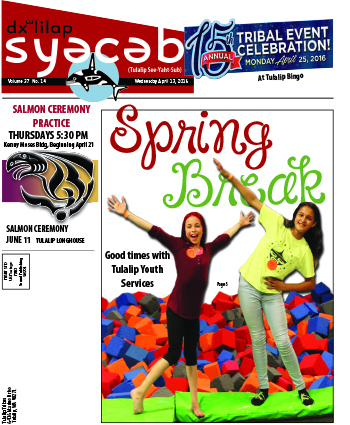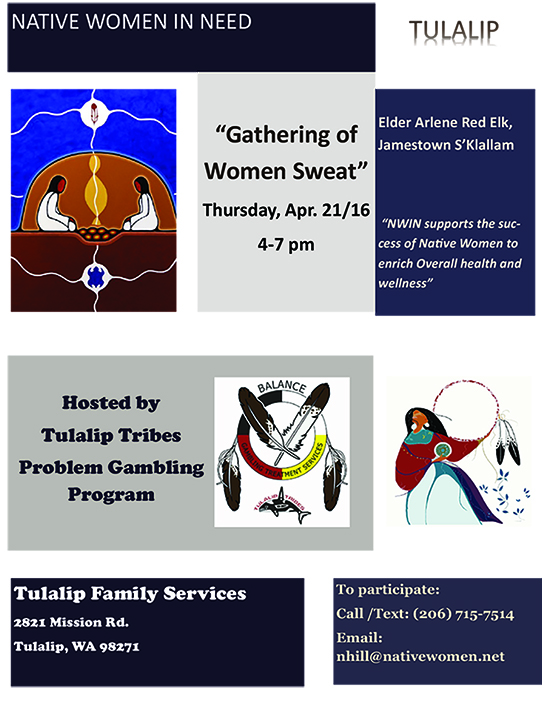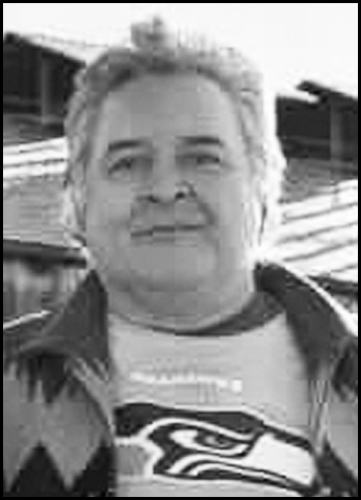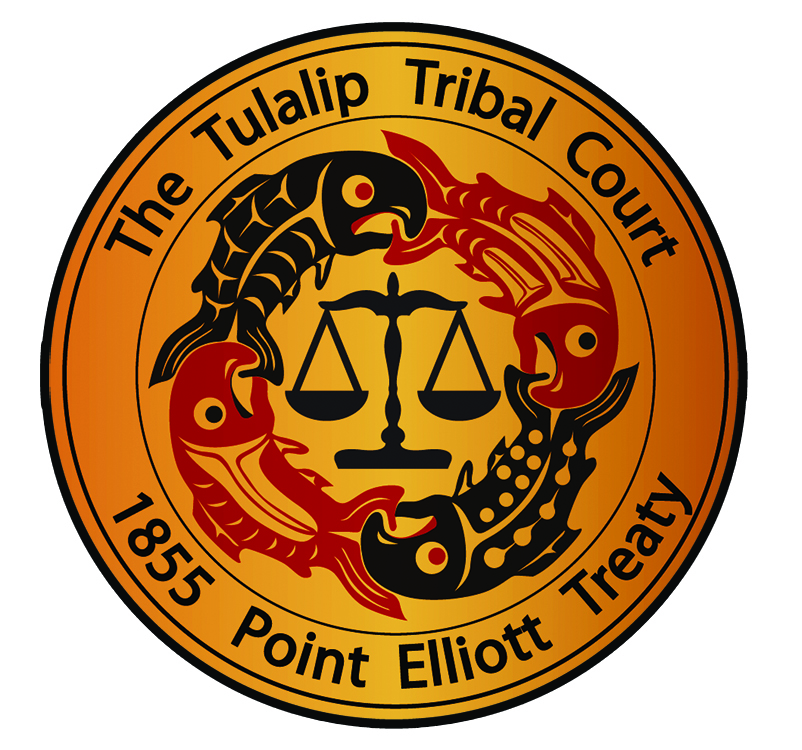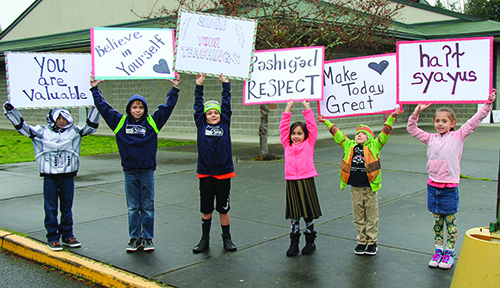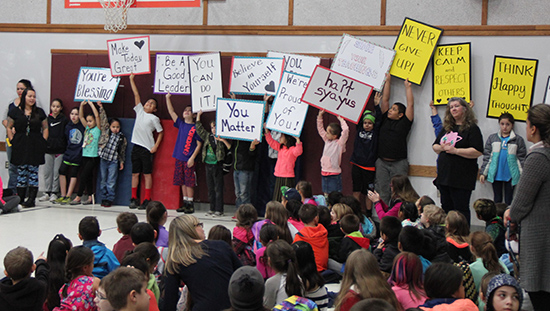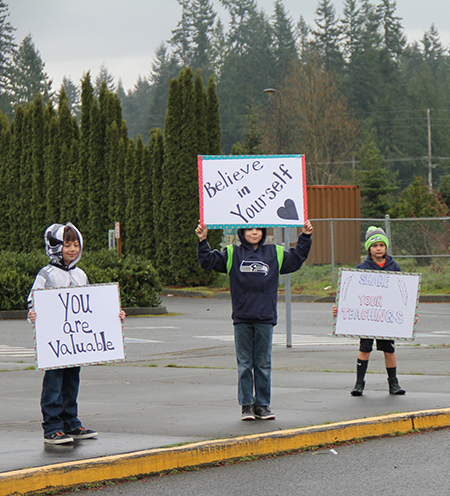Contact: Marysville School District, www.msd25.org
April 13, 2016 syəcəb
Being Frank: Poor coho returns demands caution
By LORRAINE LOOMIS, Northwest Indian Fisheries Commission
There likely will be no coho fisheries in western Washington this year as returns are expected to plummet even further than last year because of poor ocean survival.
Coho returns in 2015 were as much as 80 percent below pre-season forecasts. The Nisqually Tribe canceled its coho fishery when fewer than 4,000 of the 23,000 fish expected actually returned. The same story was repeated in many Tribal fishing areas.
That’s why western Washington treaty Tribes are calling for greater caution in fisheries management planning this year and more equitable sharing with the state of the responsibility for conservation. It is important that we have agreement on in-season management methods and actions before the season starts.
Unlike sport fishermen who can go where fishing is best, Tribal fishermen are bound by treaty to traditional fishing places located mostly in terminal areas — such as rivers and bays — that are the end of the line for returning salmon.
Every year, we must wait and hope that enough fish return to feed our families and culture. Faced with low catch rates last year, however, most Tribal coho fisheries were sharply reduced or closed early to protect the resource. The state, however, expanded sport harvest in mixed stock areas last year to attempt to catch fish that weren’t there.
That’s not right. The last fisheries in line should not be forced to shoulder most of the responsibility for conserving the resource.
Making matters worse, lack of monitoring by federal fisheries managers last year allowed Southeast Alaska commercial fishermen to exceed their harvest quota by more than 100,000 chinook. Most of those fish were bound for Washington waters.
Coho salmon that managed to make it back last year showed frightening effects of poor ocean conditions. Most were 20 to 30 percent smaller than normal. Females returned with about 40 percent fewer eggs. That will likely result in lower natural and hatchery production and fewer fish in the future.
Right now, what salmon need is plenty of good habitat to increase stock abundance and build resiliency to survive the impacts of climate change and poor ocean conditions. Sadly, salmon habitat continues to be lost and damaged faster than it can be restored, threatening the future of the salmon and tribal treaty-reserved harvest rights.
Fisheries management is about the future, and the future doesn’t look good for salmon if we don’t reverse the trend of habitat loss and damage. Perhaps most of all we need a commitment from state and federal fisheries managers that the same high conservation standard that Tribal fisheries are held to will be applied to all other fisheries. That includes making the tough decision to close some fisheries to protect returning salmon for everyone.
— Lorraine Loomis is chairwoman of the Northwest Indian Fisheries Commission. Commission members include the Port Gamble S’Klallam Tribe and the Suquamish Tribe.
Rally YES! For Marysville Schools, April 16
Gathering of Women Sweat, April 21
Victor Moses Jr.
Victor H. Moses Jr. July 9, 1961 – March 29, 2016 Victor H. Moses Jr., 54, of Tulalip, Washington went to be with the Lord on March 29, 2016. He was born July 9, 1961 in Everett, Washington to Victor and Ester Moses.
He was a logger, fisherman and crabber.
He is survived by his children: Matt S. Moses, Kumiwut Moses, Etasha Moses, Evalee Reeves, Jeremiah Moses , Shania Moses, Hallie Moses, Derek Jones, Davon Jones, and Matt K. Moses; brothers, Kelly Moses and Shane Moses; sister, Angie Moses; 25 grandchildren; and one great-grandchild. He was loved by all of his aunties and uncles, nieces and nephews and cousins.
Visitation will be held Friday, April 1, 2016 at 1:00 p.m. at Schaefer-Shipman with an Interfaith service to be held at 6:00 p.m. at the Tulalip Gym. Funeral Services will be held Saturday, April 2, 2016 at 10:00 a.m. at the Tulalip Gym with burial to follow at Mission Beach Cemetery.
Healthy Hearts, Healthy Minds
By Micheal Rios, Tulalip News
Amongst Native peoples, few things in life are as scary as diabetes. And then, after being clinically diagnosed with diabetes, a person must take many steps to resume a normal life, and in most cases, a more healthy lifestyle. What can be just as surprising as the diabetes itself are the unexpected, nonphysical effects, which are equally threatening to one’s quality of life. Although these effects might make the road to diabetes management somewhat bumpy, experts from the Healthy Hearts team from the University of Washington’s Indigenous Wellness Research Institute are demonstrating that life with diabetes not only goes on, but can get better.
The Healthy Hearts team has been working to understand and address cardiovascular disease in the Tulalip community since 2008. The first study, Healthy Hearts Across Generations, collected surveys from 284 randomly selected participants from the Tulalip tribal membership to examine cardiovascular disease risks and look at what coping strategies were most productive. From 2010 to 2012, Healthy Hearts Across Generations also provided 135 community parents and guardians with culturally influenced classes to promote health in their families.
In 2012, planning began for the second Healthy Hearts study called Healthy Hearts, Healthy Minds. This was launched in 2013 for Natives in the Tulalip area whose diabetes/prediabetes put them at greater risk for heart disease. Healthy Hearts, Healthy Minds provided those who were eligible and wanted to participate with one-on-one wellness counseling to take control of their diabetes self-care. This study came to a close in late February.
Local community resources and input from tribal members were used to develop study materials and programs, which were culturally-adapted and designed to promote sticking with positive, healthy behaviors even when it can be tough in the face of busy schedules and other challenges.
Just as exercise strengthens the mind as well as the body, awareness and education play an important role in nonphysical healing. Optimal diabetes management is more likely when people understand the nature and persistence of diabetes, and the fact that it is treatable. It’s more than just sharing facts; people also must be taught how to return to healthier lifestyles and avoid the habits that likely contributed to their health issues in the first place. This is yet another way in which wellness counselors are beneficial, providing an evidence-based intervention strategy to help participants succeed with diabetes management.
“Our focus was the wellness mental state. With diabetes, one of the challenges is that you are asked to do so many things to take care of it yourself. You have to change how you eat, you have to exercise, and check your blood sugar, you have to take your medicine, and don’t forget about getting your eyes and feet checked. It becomes very overwhelming for people,” says Rachelle McCarty, Project Manager of Healthy Hearts, Healthy Minds. “If you are really stressed out, then it’s hard to take care of yourself. That’s where our program aimed to help out. We provided participants with one-on-one coaching and very useful tools and information, so they could minimize their stress level to better manage their diabetes.”
Participants were asked to meet with a wellness coach for 10 sessions over a three-month period. Throughout the sessions, participants worked with their wellness coach to identify individual goals they wished to focus on regarding their pre-diabetes or diabetes and stress. They also worked with their coach to complete the Healthy Hearts, Healthy Minds curriculums, which covered a range of topics and skills like problem-solving, adherence, motivation and relaxation training.
Wellness coach Michelle Tiedeman, who has been with Healthy Hearts since 2009, says “What I enjoyed the most was working one-on-one with individuals and seeing them make one small, positive change at a time that added up to better overall wellness. It has been an honor to work with the Tulalip community the past several years. I have had the pleasure to work with some amazing individuals and see them accomplish great things.”
Healthy Hearts sponsored an informational lunch to share results from Healthy Hearts Across Generations in August 2014, and hosted a community celebration on February 2, 2016 to honor Tulalip’s commitment to health and share results from Healthy Hearts, Healthy Minds. You may have also seen them giving out results flyers and booklets at public events, health fairs, and the semi-annual General Council meeting last year.
Here is a sample of some of the findings:
- 42% of tribal members who responded to the health survey said they do participate in traditional activities like culture night, canoe journey, salmon ceremony, talking circles, and others.
- 40% of tribal members who responded to the health survey reported that they had high blood pressure, 50% of the men and 32% of the women.
- 27% of parents reported that they often use their own behavior as an example to encourage their child(ren) to be physically active.
- 77% shared that they have one or more blood (biological) relatives with diabetes.
- Those who enrolled in Healthy Hearts, Healthy Minds significantly lowered their depressive symptoms.
- Healthy Heart, Healthy Minds participants rated themselves significantly better at sticking with their goals at the end of the program compared to the beginning.
- 70% agreed with the statement, “I have a responsibility to walk in a good way for future generations.”
For help with your diabetes, contact the Diabetes Care and Preventions Program at 360-716-5642. For more information on the projects or results available to date, email the Healthy Hearts, Healthy Minds study at iwri@uw.edu. The projects were funded by the National Heart, Lung and Blood Institute, and the National Institute on Minority Health and Health Disparities.
Contact Micheal Rios, mrios@tulaliptribes-nsn.gov
April 6, 2016 syəcəb
Restorative Justice returning to Tulalip courthouse
By Niki Cleary, Tulalip News
What’s the surefire way to stop a behavior? Punish it, right? From schools, to workplaces, animal training to penitentiaries we see examples everywhere. Obviously, punishment works or we wouldn’t keep doing it. Except, in some cases, common wisdom is entirely wrong. Punishment doesn’t work, as evidenced by the number of repeat offenders in jails and prisons across the country.
First, we have to look at why people commit crime. Picture this individual: 30-something, active drug user since the eighth grade. This person began using drugs to escape from abuse that was never disclosed to the immediate family. This person has no job, is couch surfing most nights but occasionally living in a tent. This person has severe tooth decay from a combination of drug use, malnutrition and lack of dental care. Stealing and selling stolen items has become a form of income to fund a continuous supply of drugs. By the time this person is arrested and in court, the person’s family, having been lied to and stolen from when they assisted in the past, is unwilling to help the person any longer.
“The traditional Judeo Christian justice system is about stigmatization,” said Tulalip Prosecutor Brian Kilgore. “When all you have is a hammer, everything is a nail. Traditionally, you do something bad and we punish you and you don’t do it again. In most places a lot of criminality is driven by drug or alcohol addiction. At the end of the day, no one wants to be an addict and nobody wants to be a criminal. Relying on a traditional justice system is not the right way to do it and not the effective way to do it.”
The solution has been around for thousands of years in Native America, it’s called restorative justice. In a self-governance class taught through Northwest Indian College, tribal Judge Mark Pouley told a story.
“August 5th 1881, a member of the Sioux tribe named Crow Dog, shot and killed the chief of the tribe, Spotted Tail,” described Pouley. “The murder was dealt with internally by the tribe, by having Crow Dog pay $600, 8 horses and one blanket. The justification for that kind of tradition is an emphasis on healing the wound to the community and the accountability for the wrongdoing is reparation to the community, to the surviving victims, that is the more important thing, the idea of reparation and healing.”
The sentiment in the nearby non-Indian community was that requiring only restitution was the opposite of justice, that the man should be hanged to ‘punish’ him for his crime. The tribe involved, however, knew that the tribal community and Crow Dog would both be better served by reintegrating Crow Dog into the community.
Unlike many small communities, tribal citizens are uniquely tied to their geographic community. Many tribes require residency or physical proximity to a reservation to be enrolled, access services and participate in governance. This means that regardless of criminal history, tribal citizens are less likely to leave the Reservation permanently. Brian explained that true justice is served by setting people up to succeed, not just punishing them when they fail. Enter the idea of a specialty courts and alternative sentencing.
“Nationally there’s a movement across the country to provide wrap-around services to people with drug addiction,” Brian described. “Specialty courts are diversion programs that focus on specific groups of people and specific causes of crime. Veterans courts have popped up, drug courts, family courts. They all allow you to keep crimes off your record.”
Instead of receiving jail or prison time for crimes, specialty courts try to find and treat root causes of crimes. Instead looking at sentencing as a way to punish a person for being bad, the court works to heal the person so they don’t behave badly.
“Overwhelming data shows that specialty courts are effective, humane and save money,” declared Brian. “They are more intensive up front, but you have less recidivism (recidivism = the tendency of a criminal to re-offend) and people are living their lives instead of coming back through the system.”
Tulalip is currently building a Healing to Wellness Court. Recall our imaginary 30-something criminal? That person is the ideal candidate for this type of court.
“It will be a uniquely Tulalip court that gives people the support they need to be successful and get to the root causes of what drives the criminal behavior,” said Brian. “A wellness court coordinator establishes linkages with other services. Users have serious medical needs. One of the things that might bring them back to substance abuse is chronic pain, mental health, trauma or PTSD (post-traumatic stress disorder).
“The current system feels a lot like a game of whack-a-mole,” described Brian. “We fix one thing then another pops up. . If all you offer an addict is housing, then in a couple years you have drug houses. If you only offer counseling, then individuals with addictions to meth move onto opiates to treat pain because they have raw exposed nerves in their teeth from tooth decay. You have to address all the issues at the same time if you want people to change. That’s not happening in our current system.
“In a lot of ways specialty courts are less punitive and more closely supervised,” Brian continued. “We’ll have someone from Behavioral Health working with us on every case, every day. A community member will make linages with cultural and community activities. There is a drug culture and you have to reintegrate them [an addict] into non-drug culture, otherwise they’ll slip back into it [addiction]. The difference is that we’re trying to put the re-integrative part back in. We’re going to help people build bridges.”
Many may recall Tulalip’s previous efforts to provide restorative justice, including the Elders’ Panel. Those efforts heaped additional duties on already strained staff, and relied heavily on unpaid staff.
“Structurally it wasn’t very robust,” said Brian. “You had a lot of people who were volunteers, there was some staff turnover and that was the end of it. What we’re doing differently is this will be part of people’s jobs and there is also funding behind it. It’s not going to be something that can fade away. We’ll be working with more departments and gathering more metrics so we can show how we’re being successful.”
Brian estimates that 25% of the court’s current caseload would be good candidates for the Healing to Wellness program.
“At the end of the day, this is a court program for anyone who is ready to make a change in their life and wants to address the reasons they’re sitting in that orange jumper. If they’re not ready to make a change, this program is not for them.
Prosecutors often have a reputation for power tripping or being just plain mean, so it may seem strange that the Prosecutor’s Office is help spearhead a less punitive and more compassionate court system.
“Long before I was in law enforcement as a lawyer I did a ride along with a Walla Walla police officer. He said, ‘every time I have an interaction with the public, I want them to say thank you.’ He was absolutely right. Police are here to serve and protect, and so are prosecutors. People should feel they were treated fairly, not that they won, but that they were treated fairly.
“It’s a great privilege to be a prosecutor. Prosecuting someone is an intervention point. A bad prosecutor can ruin people’s lives. A good prosecutor has the power to transform the lives of people, both those that they prosecuted and those who were victims of crimes. Justice is a powerful ideal, and that’s what we’re about. A prosecutor’s job is to see justice done.”
The Tulalip Healing to Wellness Court is slated to begin January 2017. Keep your eye on the syəcəb for updates and information about the Healing to Wellness Court.
Make Today Great: Community Members Empower Our Future
by Micheal Rios, Tulalip News
On the crisp spring morning of Friday, March 25, the students of Quil Ceda Tulalip Elementary were greeted by some unexpected visitors. Parents, grandparents, siblings, community members, and volunteers lined the student drop-off sidewalk holding rally signs and giving waves of encouragement.
Prior to the commencement of the school day, the sign wielding rallyteers joined the students at their morning assembly. The goal? To show our youth that we do care about their education and support all their efforts.
During the assembly Natosha Gobin, Lushootseed Teacher and coordinator of the rally, asked several students, “How did it feel when you saw your friends and family welcoming you to school, holding these signs?”
These were a few of the students’ responses: “I felt happy.” “Awesome!” “Made me feel good.” “It made me feel welcome.”
Following the assembly, See-Yaht-Sub staff discussed the meaning and impact of the morning’s event with Natosha.
What was the reasoning behind the Quil Ceda Tulalip Elementary rally?
“During campaign season, with all the signs that go up and the roller coaster of feelings within the community, some positive vibes needed to be put out there. Not to attach to anyone’s name, not for a campaign, but to uplift, empower and encourage others. After seeing a post where my friend and fellow Tulalip tribes employee, Trisha Montero-Higgonbotham, spent an afternoon holding up positive messages, I knew this would be a great opportunity to spread blessings in our community.”
Why is it important to uplift our young ones? And what did meant to you and our community to hear the students say it made them feel good and welcome to school seeing the signs?
“Our youth are surrounded by chaos at times, no matter how much we try to protect them from it. Some of the simple things like going to school every day can be exhausting. I have five kids and four of them attend Quil Ceda Tulalip. They love their school and are proud to be a part of a cultural rich environment. Everyone is going into Spring Fever mode, so we wanted to show the kids some support and try to start their day off with some positive vibes. Hopefully it would stay with them the whole day as they interacted with others. Everyone says education is important, but how can we really help make sure our students feel supported? This was a success in making them feel loved, supported, encouraged, and welcome.”
Do you plan to hold more rallies like this one?
“We would like to spread these blessings on a regular basis, reaching out to other local schools, reaching out to the various tribal business buildings, our seniors and elders, to show that we all love and care for one another and that simple reminder can change someone’s day for the better, and carry those blessings with them wherever they go.”
How would you like to see them grow and become a common occurrence?
“We also want to create positive signs for our addicts, including weatherproof flyers giving them direction to resources to get clean. We all know where the drug houses are and we can post signs around there. We all know and love an addict, and want to save them. Tough love works sometimes but a silent reminder that someone is loved and has a choice is worth the attempt if it saves someone from walking up to the door of a dealer or down a road to use.”
Was this part of Natural Leaders?
“This was not a part of Natural Leaders, but I knew that the parents involved in Natural Leaders would be more than happy to help. When I shared Trisha’s post and mentioned I wanted to create signs for our community, I had some community members who wanted to be a part of it. Yvonne Williams, Eliza Davis and I spent a Friday night making the first set of signs. I made the remaining signs and put out a call to anyone who was interested to join us at the school.”
Looked like there were three Heritage students taking part in the rally.
“Yes, Yvonne Williams brought her two oldest kids, Roselynne Jablonksi and Nate Williams along with another Heritage student. Our young ones look up to our older high school students. It means a lot to have them participate and support the younger generation.”


